sierraclub.org - sierra magazine - july/august 2010 - homeland security


Homeland Security
When you're poor, the environmental movement doesn't stop at simple things like pollution
Decades ago, Cesar Chavez organized tens of thousands of Latino farmworkers to confront the indiscriminate use of pesticides, and the once-powerless residents of Warren County, North Carolina, rose up to block construction of a toxic landfill. But the environmental-justice movement isn't just about protecting the underprivileged from pollutants. It also addresses economic inequalities, cultural and linguistic obstacles, and political naivete. And as with any movement, it produces unlikely heroes—like that beleaguered guy next door who jumps into battle simply because he's had enough. In the following pages we present six persuasive organizers who are devoted to fighting against powerful, often negligent forces—and, in many cases, winning. —Javier Sierra
Javier Sierra writes the monthly bilingual column "Sierra & Tierra." For more information, go to Ecocentro, the Sierra Club's Latino outreach Web site.

Charles E. Allen III
New Orleans, LA |

Juan Parras
Houston, TX |

Wahleah Johns
Flagstaff, AZ |

Father Vien Nguyen
New Orleans, LA |

Danny Ray Cook
Bald Knob, WV |

Dolores Leonard
Detroit, MI |
Charles E. Allen III, New Orleans, Louisiana
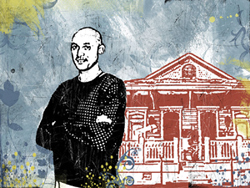 Growing up in the Lower Ninth Ward of New Orleans, Charles E. Allen III was always aware of his hometown's relationship to the natural world. His grandfather Robert Fields explained to him that the city's topographic undulations were deposits of silt from tributaries of the Mississippi River, and he made sure the young Allen knew not to throw garbage overboard when the two went fishing.
Growing up in the Lower Ninth Ward of New Orleans, Charles E. Allen III was always aware of his hometown's relationship to the natural world. His grandfather Robert Fields explained to him that the city's topographic undulations were deposits of silt from tributaries of the Mississippi River, and he made sure the young Allen knew not to throw garbage overboard when the two went fishing.
"He always stressed that whatever you put out in the world, it doesn't go away so easily," Allen recalls.
That lesson hit home in August 2005, when the levees failed after Hurricane Katrina, inundating the Lower Ninth, destroying more than 4,000 homes, and leaving a residue of stagnant, toxin-plagued water. At the time, Allen worked at Tulane University's Center for Bio-environmental Research, developing training opportunities for undergraduates. He soon shifted his focus to bringing green principles to the rebuilding of his own neighborhood.
Allen's neighborhood, the predominantly African American Holy Cross district, suffered less damage than the Lower Ninth, and about half of its 5,000 residents returned. It seemed the ideal place to demonstrate that the Lower Ninth could be reborn as well as rebuilt.
As board chair of the Holy Cross Neighborhood Association, Allen helped lead residents in planning a rebuilt neighborhood that would retain its historic flavor but also be compact, walkable, served by public transit, and filled with vegetable gardens and energy-efficient homes. The plan attracted the attention of groups like Global Green and actor Brad Pitt's Make It Right, which were looking to construct ecofriendly houses in New Orleans. About 40 such homes now stand, and 10 more are in the works. Allen encourages residents to adopt low-cost, high-impact options like radiant barrier insulation, compact fluorescent lightbulbs, and water-absorbing rain gardens.
"There's a middle area where we can all be green," he says. "It's all about finding that shade you can afford, and together, collectively, all those shades contribute to a smaller footprint."
These days, Allen is working to bring an eco-friendly grocery store to the Lower Ninth—it would be the first grocery store of any kind there in 25 years. And he's advocating for the restoration of Bayou Bienvenue, a cypress swamp just north of the ward that was destroyed in the 1960s when the Army Corps of Engineers dredged a shipping channel. After Katrina, that channel funneled storm surge into the Lower Ninth. A restored bayou would protect the neighborhood from future floods and provide a welcome spot to canoe and fish.
"For us, environmental justice is being able to enjoy this green way of life en masse, and not have it be enjoyed by just a few who can afford it," Allen says. "It took an environmental disaster to get people to realize we've got to live better, and if we get Mother Earth to be as healthy as she should be, she can protect us." —Dashka Slater
Juan Parras, Houston, Texas
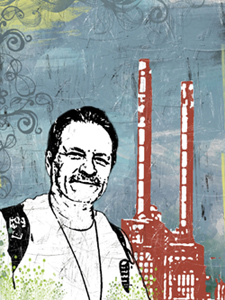 Would you enroll your child in a school surrounded by spewing smokestacks? Two thousand families in one Houston neighborhood have no choice. Cesar Chavez High School in Manchester is surrounded by some of the dirtiest petrochemical facilities in the country. If a facility had an accident, it could affect at least a million people.
Would you enroll your child in a school surrounded by spewing smokestacks? Two thousand families in one Houston neighborhood have no choice. Cesar Chavez High School in Manchester is surrounded by some of the dirtiest petrochemical facilities in the country. If a facility had an accident, it could affect at least a million people.
Manchester is Juan Parras's battlefield. "Thousands of children here are going to schools located less than two miles from a chemical plant," says Parras, founder of Texas Environmental Justice Advocacy Services. Parras says Chavez High's mostly Latino student body would take the brunt of a mass leak of pollutants.
Ironically, the Houston Independent School District has designated Chavez High an environmental magnet school, "probably so we can not only study about the environment but breathe and live the experience of it all," Parras says.
According to a 2007 study by the Houston Chronicle, the levels of three known carcinogens in Manchester—1,3 butadiene, benzene, and chloroform—exceed maximum federal levels. Benzene levels are so high that living in Manchester is like being stuck in traffic 24-7.
Raised in segregated Big Spring, Texas, Parras learned about racism and injustice firsthand. He became a community and union organizer in his home state and in Convent, Louisiana, where he helped block a proposed polyvinyl chloride (PVC) plant in an impoverished African American community already reeling from industrial pollution. That project spurred the first major court challenge mounted using the Environmental Justice Act, a 1994 law ordering federal agencies to abolish policies that lead to a disproportionate number of environmental hazards to communities of color or low income.
"That fight ignited my interest in environmental and social justice," Parras says. "The citizens were so passionate about keeping Shintech [the world's largest PVC manufacturer] out of their community that you could feel victory long before they actually won their arguments."
Parras hopes such stories of enthusiasm will inspire activists with no ties to these beleaguered communities. "We need all the help we can get," he says. "If you are a fighter, then come visit us and take a toxic tour. You will not forget it." —Javier Sierra
Wahleah Johns, Flagstaff, Arizona
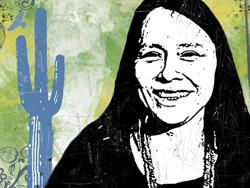 To Peabody Western Coal Company, northern Arizona's Black Mesa is America's largest coal deposit, with some 670 million tons of coal still underground after more than 40 years of exploitation. To the 35,000 Navajo who live there, Black Mesa is a female mountain, a sacred place, home. "For the Dine people, this is our foundation and our identity," explains Wahleah Johns, codirector of the Black Mesa Water Coalition. "It's the territory we emerged from as a people. It's our way of life."
To Peabody Western Coal Company, northern Arizona's Black Mesa is America's largest coal deposit, with some 670 million tons of coal still underground after more than 40 years of exploitation. To the 35,000 Navajo who live there, Black Mesa is a female mountain, a sacred place, home. "For the Dine people, this is our foundation and our identity," explains Wahleah Johns, codirector of the Black Mesa Water Coalition. "It's the territory we emerged from as a people. It's our way of life."
Johns lived on the Navajo Reservation on Black Mesa until she was in fourth grade, when her family moved to a nearby border town. Back then, Peabody's two Black Mesa mines were just a fact of life. Johns's family used to stop by to use the showers at the mining complex because they didn't have running water.
"I was fascinated," Johns recalls. "They were the only industry that had electricity. We'd drive by, and they'd have these big lights. We were like, 'This is amazing!'"
As she got older, Johns began to understand the price her people were paying for the coal that brought electricity to Southern California, Nevada, and parts of Arizona and left most of Black Mesa in the dark. Twelve thousand Navajo had been forced from their land to make way for stripmining operations, and the 273-mile slurry pipeline that carried coal from the Black Mesa Mine to the Mohave Generation Station in Nevada sucked 50 gallons of drinking water from the Navajo aquifer every second, depleting a resource the tribe had managed for thousands of years.
"The consumption of water [on the reservation] is totally different than in the city," Johns explains. "You're brought up hauling your own water, going to the nearby stream, or catching snow from the rooftop."
In 2001, after reading a Natural Resources Defense Council report on Peabody's use of the Navajo aquifer, Johns began working with an aunt and uncle to get the word out, translating the report into terms that would make sense to Black Mesa residents. Instead of gallons, for instance, they talked of 55-gallon drums, which are what most Navajo use to haul water. The effort grew into two groups, To' Nizhoni Ani and the Black Mesa Water Coalition.
Traveling along the unpaved roads of a reservation the size of West Virginia, the Black Mesa Water Coalition has worked to get Navajo talking about a future without coal. Over the past 33 years, $24 million in annual royalties from Black Mesa coal has gone into the Navajo Nation's general fund, but the Navajo's annual per capita income is still under $7,000, unemployment is at 53 percent, and the Black Mesa area is still without electricity and running water.
"Not one dime has come back to Black Mesa," Johns says. "We can't expect money to solve everything for us."
The movement away from a coal economy has already begun. The Black Mesa Mine closed in 2005, as did the water-hogging slurry pipeline. In January, the Department of the Interior prevented Peabody from reopening and expanding the mine using a permit it holds for a neighboring operation. And last year, Johns's Black Mesa Water Coalition persuaded the tribal government to establish a Navajo Green Economy Fund.
"We had to come up with our definition of green," Johns says. "A lot of us raise sheep, so that meant developing an economy around sheep, around the wool, around the meat." The new Navajo economy might include renewable energy and weatherization, but it could also include a wool mill, green construction using traditional building methods, and an agricultural venture based on the tribe's store of heirloom seeds. "Our main thing is looking at what our people are doing and then supporting systems that are already in place," Johns explains.
Looking back over the past nine years, Johns wishes her organization had had more training, more guidance, and more money so that they wouldn't have had to learn so much through trial and error. But she's proud that their work has consistently embodied Dine values—respectful interaction, the involvement of multiple generations, and a commitment to charting a self-sufficient, sustainable future. "Being green is not a new concept to our people," she says. —D.S.
Father Vien Nguyen, New Orleans, Louisiana
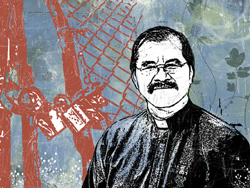 After Hurricane Katrina and the levee breach that flooded the city in 2005, the Vietnamese American residents of New Orleans East were among the first to return, despite the lack of running water and electricity. Many of them had lived through worse. But when they learned of plans to build a landfill in their community that would hold 6.5 million cubic yards of demolition debris, they reacted with alarm.
After Hurricane Katrina and the levee breach that flooded the city in 2005, the Vietnamese American residents of New Orleans East were among the first to return, despite the lack of running water and electricity. Many of them had lived through worse. But when they learned of plans to build a landfill in their community that would hold 6.5 million cubic yards of demolition debris, they reacted with alarm.
"This was just a few months after Katrina, and we were trying to rebuild," says Father Vien Nguyen of Mary Queen of Vietnam Catholic Church, which had about 6,000 parishioners before the hurricane. "We came to the conclusion that if we allowed that landfill to be built, there was no way that families with young children would return."
At first the community was willing to negotiate. City officials said the landfill, known as Chef Menteur, was crucial for rebuilding, and Nguyen felt that since his community had generated some of the debris, they should assume some of the burden for its disposal. At a meeting with the landfill developer, Waste Management Inc., Nguyen asked for three changes: a smaller footprint, a stricter height limit, and a synthetic liner to catch any runoff.
"They said no to all three," he says. "So my response was 'Then we will fight you every step of the way.'"
Nguyen, who came to the United States in 1975, has spent most of his 20 years in the priesthood working on pastoral issues, not environmental ones. But he understood that his parishioners saw the landfill as a threat to their survival. "The older people realized that if their children and grandchildren did not return, all they had endeavored over the past 30 years would come to nothing," he explains. "They were too old to move. People who were in their 40s when they came are now in their 70s. They cannot begin again."
And so the community, now numbering around 4,200, fought—in court, at the city council, at the state legislature. More than 400 people rallied outside city hall, and 200-plus demonstrated in front of the landfill. In August 2006, they convinced Mayor Ray Nagin to sign an order closing the landfill. But Waste Management insisted it had a permit and pressed on. In turn, parishioners locked the landfill gates so the waste trucks couldn't enter. Of the 35 people threatened with arrest, 32 were over the age of 60. That same day, a judge ruled that the city of New Orleans did indeed have the right to shut down the landfill. The community had won.
These days, Nguyen is extending his help to other congregations fighting similar battles, like the Holy Vietnamese Martyrs Mission in Atlanta, which is adjacent to a site that has been rezoned to serve as a waste-transfer station. To him, the deja vu experience is proof that environmental burdens are disproportionately placed on the shoulders of the poor and the voiceless. "Environmental justice means that somehow we need to make sure the burden is equal," he says. "We have to have equality in opportunity and responsibility. Right now that's not the case."
The now-closed Chef Menteur landfill still looms large in New Orleans East. It sits, unlined, in the midst of wetlands that drain into a lagoon that many parishioners use to water their gardens. The church is fighting in court to get the wetlands returned to their original state and is also hoping to find a new place for Vietnamese residents to grow food, as they have done since first arriving in New Orleans. The church is developing a 28-acre urban farm where the community can control the safety of water and soil. The farm will include plots for 100 farmers, aquaculture, free-range livestock, and a spot for the farmers' market that has taken place in the neighborhood since 1976. Local chef John Besh, who owns six New Orleans restaurants at which he would like to serve locally grown produce, has promised to work with the community's farmers and even to provide seeds.
It's a fitting image for a city that's a cultural gumbo. "Our people have tasted success," Nguyen says. "And success breeds success." —D.S.
Danny Ray Cook, Bald Knob, West Virginia
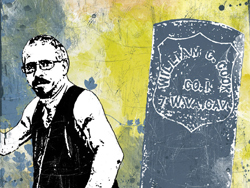 Back in the early 1700s, a young Londoner named John Cook was walking by the docks with his sweetheart when he heard music coming from a ship. The two went to investigate, and—so the story goes—the ship set sail with them aboard. They settled in Appalachia, in what is now Boone County, West Virginia. Nearly 300 years later, their descendant Danny Ray Cook still lives in Boone County, in a hollow below Cook Mountain. A retired emergency medical technician and nursing assistant, he tells the story of his ancestors' arrival in the New World as if he'd heard it firsthand. "These are family stories passed down through generations," he says.
Back in the early 1700s, a young Londoner named John Cook was walking by the docks with his sweetheart when he heard music coming from a ship. The two went to investigate, and—so the story goes—the ship set sail with them aboard. They settled in Appalachia, in what is now Boone County, West Virginia. Nearly 300 years later, their descendant Danny Ray Cook still lives in Boone County, in a hollow below Cook Mountain. A retired emergency medical technician and nursing assistant, he tells the story of his ancestors' arrival in the New World as if he'd heard it firsthand. "These are family stories passed down through generations," he says.
Six generations of Cooks are buried on Cook Mountain, in three small family cemeteries. Cook and his family used to go to them to picnic and lay flowers. But while Cook Mountain bears their name, the present-day Cooks had no say when Horizon Resources decided to blast the peak to smithereens to get at the coal seam beneath. As the company chews up the mountain, it spits out millions of tons of rock and topsoil, which get shoveled as fill into nearby valleys. The blasting and filling operations have turned three nearby communities into virtual ghost towns. And now the dead are being evicted too.
Last summer, when Cook went to visit the cemeteries, his way was blocked by felled trees and bulldozed berms. He called the coal company superintendent and was told that if he went up there again, he'd be arrested for trespassing. Mining operations have come within 100 yards of one of the old cemeteries, and what was once a peaceful resting place in the woods is now a barren moonscape of rubble and debris.
Cook's father, brothers, and brothers-in-law worked in the mines all their lives, and Cook always thought that mountaintop-removal mining was "just life," he says. But he has seen families driven out by the blasts and the rubble, their longtime homes rendered worthless. An avid hunter and fisherman, he's seen fish with two heads and other birth defects caused by the draining of heavy-metal-laden slurry ponds into rivers and streams—the same water that people drink.
Working with the Ohio Valley Environmental Coalition, Cook registered his family cemeteries with the state historic-preservation office. This spring, they succeeded in getting legislation passed that requires coal, oil, and gas permit applications to include a list of affected cemeteries and explain how access to them would be preserved. The next step, he says, is to stop mountaintop mining and valley fills altogether, and he's traveled to Washington, D.C., to lobby for a moratorium.
"I'm not against the coal companies, and I'm not against coal," he says. "But our state is known as the Mountain State, and I'd like to keep it as the Mountain State. They need to respect what West Virginia has and not take it away." —D.S.
Dolores Leonard, Detroit, Michigan
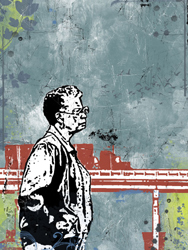 Dolores Leonard has lived in her southwest Detroit home since 1957. From her kitchen, she can see the lights of the Marathon Oil Refinery, 10 blocks away, and until a year ago felt the blasts from the salt mine underneath her house. "Industrial pollution" isn't an abstraction in this predominantly African American neighborhood, which hosts dozens of steel, asphalt, and chemical plants, a water-treatment facility, and a bridge used by 3 million trucks annually.
Dolores Leonard has lived in her southwest Detroit home since 1957. From her kitchen, she can see the lights of the Marathon Oil Refinery, 10 blocks away, and until a year ago felt the blasts from the salt mine underneath her house. "Industrial pollution" isn't an abstraction in this predominantly African American neighborhood, which hosts dozens of steel, asphalt, and chemical plants, a water-treatment facility, and a bridge used by 3 million trucks annually.
A retired community college economics instructor, Leonard has a phrase for the constellation of industries surrounding her. "I call it environmental injustice," she says. "When you look at where detrimental facilities are located, it's always in communities where there are poor people, people of color. When we negotiate with a company, I always ask, 'Where do you live? Would you like this refinery in your neighborhood, where your children have to breathe and smell it?'"
Last summer an advocacy group called Global Community Monitor trained Leonard and other southwest Detroit residents to take their own air samples using devices housed in portable buckets. While the state of Michigan claims that none of southwest Detroit's plants are breaking the law, the bucket brigade found elevated levels of chemicals like methyl ethyl ketone, hydrogen sulfide, methane, toluene, and lead. "It's a sad day when city council members will give money and tax breaks to companies without having a chemist look at the impact of what those companies are emitting," she says.
Leonard became active with the Sierra Club about seven years ago, after getting frustrated with the explosions from the salt mine. Since then, she's taken on one polluter after another, each originally pitched to the community as a job generator in a city with chronic unemployment.
There's Great Lakes Petroleum's plan to open an asphalt storage terminal in the neighborhood, for which the company requested $3 million in tax breaks. (The subsidy request was withdrawn in the face of massive neighborhood opposition, but the project itself remains on the table.) There's the Detroit River International Crossing Project, a bridge linking the city to Canada, whose traffic would spew pollutants onto Southwestern High School's football field. And—most dramatically—there's Marathon Petroleum's $2.2 billion expansion of its Detroit refinery so that it can process tar sand oil from Canada, known as the "dirtiest oil on Earth."
In 2007, the Detroit city council awarded the refinery a $186 million tax-exemption package. In exchange, Marathon promised that 135 jobs would go to Detroit residents and that it would pay for extra street-sweeping to clean up particulates. Leonard doesn't think it's a fair trade. "Based on what I've read, there are no real benefits to the community," she says. "The only benefit [Marathon] can give me is to not come into my community."
Leonard wants her neighbors to understand what the PR-savvy companies are not going to do for them. To that end, she has worked to get a reading corner with four computers installed in the local community center, since the nearest library is three bus rides away. The next step is easy, she says: "Just go online and start researching those companies." —D.S.
This article was funded by the Sierra Club's Environmental Justice and Community Partnerships program.
Illustrations by Melissa McGill. Source photos, from top: Yannis Vassilopoulos, Monique Harden, Ronnie Farley, Rick Olivier, B. Mark Schmerling, Rhonda Anderson.